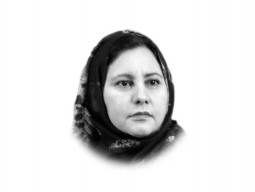
In recent times, numerous corruption indices have been developed to measure corruption. One of the most widely used indices is the Corruption Perception Index (CPI) developed by Transparency International (TI). It recently reported that Pakistan has performed well in its CPI rankings. This certainly is good news and we must congratulate the people in power. But we need to question whether the CPI is a truly credible measure. Does it measure corruption correctly? We need to understand how such indices work. For the CPI, as stated on TI’s website, data is aggregated from a number of sources that try to capture the perception of corruption in the country. It’s considered a ‘poll of polls’. Furthermore, according to Wikipedia, it draws data from 13 surveys and assessments from 12 institutions. These 13 surveys contain assessments from both business people as well as from groups of analysts.
Various people have pointed out flaws in the CPI and questioned its usefulness. Quite recently, the political economist Dan Hough pointed out three flaws in the CPI in an article in the Washington Post. Firstly, he thinks corruption is too complex to be measured by a single score. Secondly, the CPI does not measure corruption itself, but rather the perception of corruption. Finally, the CPI only measures corruption in the public sector, not in the private sector. He also claims that the CPI’s usefulness in measuring corruption is limited.
The CPI also does not take into account public input. While earlier versions of the CPI did take public opinion into consideration by using surveys, from 2012 onwards, this practice was stopped. The CPI can thus be seen as a measurement of how business people and consultants in big companies perceive corruption in a country. However, without input from ordinary citizens, one can never truly understand how a country perceives corruption, and this is an imbalance that should be redressed. Some studies also note that corruption is clandestine in nature and is often not documented or reported. Hence, it is often hard to quantify it on a certain scale. This means that a large part of the corruption that happens is ignored by indices like the CPI, which makes their credibility questionable.
While indices like the CPI can give us an overview of the level of corruption in a country, they lack the detail, rigour and insight needed to truly understand the magnitude of the situation. Without detailed information about the corruption in each individual department or state, on both a local and national level, the CPI cannot help us truly understand the gravity of the situation and how to remedy it.
Consistency is another issue. The way to calculate the CPI used to vary from year to year, rendering comparisons to past scores useless. However, since 2012, TI has adopted a single standard and is adhering to it, which makes it possible to compare scores and analyse the situation to a slightly greater degree.
If we are to battle corruption effectively, we need to address real problems and solve them. As per the CPI result card, we are lagging behind in human development, the rule of law, and voice and accountability indices. We need to spend more on education and healthcare. We also need to make it easier for new businesses to enter the market. According to the World Economic Forum’s “Global Competitiveness” report, the biggest hurdle new businesses in Pakistan face is that of corruption. We need to reduce corruption so that we can attract new businesses and foreign direct investment.
At the same time, we should be careful and not chastise governments if certain rankings present the country in an unfavourable light. While corruption indicators and indices like the CPI give us some modicum of measure of the corruption in a country, we should not just take them at face value. We should delve into their calculations and understand them before giving weight to their words. Moreover, it would be more useful if indices like the CPI could share how things have improved across various sectors, using numbers and percentages, and what measures have brought those exact changes.
Published in The Express Tribune, February 18th, 2016.
Like Opinion & Editorial on Facebook, follow @ETOpEd on Twitter to receive all updates on all our daily pieces.















COMMENTS
Comments are moderated and generally will be posted if they are on-topic and not abusive.
For more information, please see our Comments FAQ